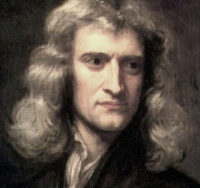
Charles Darwin‘s first reference to a “gene” appears in the 4th edition of The Origin of Species in 1866. Since then, the gene has emerged as the essential molecular mechanism driving Darwin’s theory. This intersection of natural selection with Gregor Mendel‘s theory of genetic inheritance was later named Modern Evolutionary Synthesis or The Modern Synthesis, largely based on Julian Huxley‘s 1942 book entitled Evolution. The Modern Synthesis.
A gene mutation-driven evolution theory gained increasing popularity. By the 1960s, using emerging gene testing technologies, however, the model began encountering challenges. In the search for a new theory, Susumu Ohno, a geneticist at the City of Hope Medical Center, proposed the gene duplication-driven evolution theory in his book Evolution by Gene Duplication (1970). Since then, researchers have investigated Ohno’s model searching to answer the elusive “what drives evolution” question.
Role in Evolution
The human genome contains between 20,000 and 25,000 genes. Most of these have counterparts in chimps, mice, flies, yeast, and even viruses and bacteria. But some of our genes and gene copies are human-specific.
“I think it’s a missing piece of human evolution,” said Evan Eichler (pictured right), a geneticist at the University of Washington, in an interview with Emily Singer. Published in Scientific America, Eichler continued, “My  feeling is that these duplication blocks have been the substrate for the birth of new genes.”
feeling is that these duplication blocks have been the substrate for the birth of new genes.”
Eichler is not alone. “Gene duplication is one of the major drivers of the evolution of gene and protein networks,” argues Christopher Baker in the journal of Science article entitled “Following Gene Duplication.” According to Philip Hastings, a geneticist at Baylor College of Medicine in Houston –
“This [duplication] mechanism appears to be seminal in our evolution… It’s possible that we are the way we are largely because of this mechanism that generates dramatic episodes of chromosomal structural change.”
“This phenomenon is understood to be an important source of novelty in evolution,” according to WIKIPEDIA’s page entitled Evolution by gene duplication, “providing for an expanded repertoire of molecular activities.”
Mechanism of Gene Duplication
The means of gene duplication and the location of the duplicate copy is species-specific. In elephants, rats, and platypuses, the duplicate copy or copies tend to sit next to the original sequence as a tandem series. In humans, chimps, and gorillas, though, duplicate copies are distributed across the genome. For these reasons, locating and studying duplicate copies In the laboratory has tested the resources of investigators.
Like gene mutations, gene duplications damage normal DNA. While DNA mutations regularly occur during cell division, mutations can also develop following exposure to environmental factors, including radiation, chemicals, and viruses.
Of these factors, however, only viruses can copy and produce a duplicate gene precisely. Viral infections, then, are considered the most likely environmental factor capable of duplicating a gene. Humans have no known natural gene duplication process. As Singer speculates –
“One popular theory points to a class of viruses known as retroviruses which can insert DNA into their host’s genome that is then passed from generation to generation… Perhaps a retrovirus was responsible for the initial core duplicons.”
Edward Hollox, a geneticist at the University of Leicester, UK, agrees –
“My favorite [gene duplicaton] hypothesis is that at a key point in great ape evolution, there was a burst in retroviral [an RNA virus] activity.”
Once inserted, future generations will inherit this viral-induced duplicate gene. This gene may deliver an evolutionary advantage to future generations, theoretically.
Human Duplicated Genes
Duplicated genes are now known to comprise nearly 5 percent of the human genome. One of these is the SRGAP2C gene. As one of the 23 duplicated genes found in humans, including Denisovans and Neanderthals, this is the only duplicating gene not found in other primates.
In the journal Nature Genetics (2007), Eichler speculated that a set of what has been called “core duplicons” gives a selective evolutionary advantage. Eichler explains –
“We hypothesize that the rapid expansion and fixation of some intrachromosomal segmental duplications during great-ape evolution has been due to the selective advantage conferred by these genes and transcripts embedded within these core duplications.”
 SRGAP2 plays a critical role in neural development. In 2012, Eichler’s team and a group from the Scripps Research Institute demonstrated that SRGAP2C delayed neuron migration during the development of the brain.
SRGAP2 plays a critical role in neural development. In 2012, Eichler’s team and a group from the Scripps Research Institute demonstrated that SRGAP2C delayed neuron migration during the development of the brain.
The paper published in Cell entitled “Evolution of human-specific neural SRGAP2 genes by incomplete segmental duplication” lends support to Ohno’s duplication theory. ScienceDaily speculates that the delayed neuron migration may allow for “the emergence of more connections between cortical neurons.”
In the article entitled “A Missing Genetic Link in Human Evolution,” Singer (pictured left) hypothesizes –
“[The] mysterious episodes of genetic duplication in our great ape ancestors may have paved the way for human evolution… [but] much about the duplication process — and its implications — remains a mystery.”
Duplication-Induced Neurological Disorders
Gene duplication-driven evolution is a double-edged sword. On the one edge, duplications were hoped to be “the substrate for the birth of new genes,” while on the other edge, gene duplications are associated with a wide range of biological disorders. One sword, two possible outcomes.
“While these duplicated genes may have contributed to features that make us human,” Ed Yong (pictured right) notes in The Atlantic, “they might also have made us more vulnerable to diseases. When two parts of the genome are  nearly identical, they can often lead to massive rearrangements.”
nearly identical, they can often lead to massive rearrangements.”
Gene duplication may be one of nature’s most dangerous double-edged swords. Singer explains –
“The same genetic instability that enables [evolution]… [also] perhaps explains some of our susceptibility to disease. Parts of the duplicated blocks [genes] have been tied to a number of brain disorders, including intellectual disability, schizophrenia, and epilepsy.”
Duplication-Induced Aggressiveness of Pancreatic Cancer
In searching for a molecular basis for pancreatic cancer, the research team headed by Roland Rad of Technische Universität München, Germany, suspected and discovered an association between gene duplications and the aggressiveness of pancreatic cancer.
Pancreatic cancer is one of the most aggressive and deadly forms of cancer in humans. Using advanced technologies, Rad’s research team demonstrated a specific association between duplications of the mutant KRAS gene and the degree of the tumor’s aggressiveness.
The KRAS gene provides instructions for making a protein called K-Ras that is part of a signaling pathway known as the RAS/MAPK pathway. In the ScienceDaily article entitled “Pancreatic cancer: Gene duplication explains tumor aggressiveness,” Sebastian Müller, the lead author of the study, explains in an interview –
“We also showed that as the number of mutant KRAS copies [duplicates] increases, the tumor’s aggressiveness and ability to metastasize also increases.”
In testing the gene duplication-driven evolution theory with more advanced technologies, the copies have not proved to be “the substrate for the birth of new genes,” as once hypothesized by Ohno, Eichler, Baker, and Hastings.
Gene Duplication-Driven Evolution Critics
 “Clearly, the emergence of a new gene as a result of a duplication,” Eugene Koonin (pictured left), Senior Investigator National Center for Biotechnology Information (NCBI), argues in his book The Logic of Chance,
“Clearly, the emergence of a new gene as a result of a duplication,” Eugene Koonin (pictured left), Senior Investigator National Center for Biotechnology Information (NCBI), argues in his book The Logic of Chance,
“… is a far cry from Darwin’s ‘infinitesimal’ changes… the fact that [gene] duplication, as a major mechanism of evolution, flies in the face of gradualism”
Rather than Darwin’s “slight successive changes,” the rapid viral production of a duplicated gene is anything but “slight successive.” Koonin continues –
“The central tenet of Darwin… [is] challenged by the concept of evolution by gene duplication.”
Escherichia coli Duplication
Biologist Richard Lenski started the now legendary experiment in his laboratory early in 1988 with just 12 flasks seeded with genetically identical bacteria known as Escherichia coli (E. coli). After studying more than 68,000 generations, Lenski observed bacteria to “evolved the capacity to exploit citrate” rather than glucose for energy. At the time, what happened was a mystery.
Zachary Blount pinpointed the genetic mystery in the paper “Genomic analysis of a key innovation in an experimental Escherichia coli population,” published in Britain’s prestigious Nature journal.
Blount discovered E. coli’s key innovation was the result of gene duplication. The sequences of DNA nucleotides in the region of the cit gene contained a duplicate copy. The newly arranged promoter gene gained control over the blocking gene to allow for the use of citrate for energy.
However, only one of the twelve flasks studied, flask #9, developed the ability to use citrate in Lenski’s laboratory since 2008; none of the other eleven flasks developed the gene duplication. This isolated event draws into question the predictability of gene copies as “the substrate for the birth of new genes” in evolution.
This problem was investigated further by Dustin Van Hofwegen at the University of Idaho. The study, entitled “Rapid Evolution of Citrate Utilization by Escherichia coli,” was published in the Journal of Bacteriology in 2016. According to Hofwegen, Lenski’s long-term evolution experiment (LTEE) has reached an experimental dead end –
“Here we show why it probably was not a speciation event… We conclude that the rarity of the LTEE mutant was an artifact of the experimental conditions and not a unique evolutionary event. No new genetic information (novel gene function) evolved.”
Flask #9 was Lenski’s best shot for uncovering evidence for an evolutionary event amongst the estimated hundreds of millions of mutations over the past 30 years – translating to more than a million years of human evolution.
The University of California, Berkeley website entitled Evolution 101, produced by their Understanding Evolution Team, has removed gene duplication-driven evolution as a mechanism of evolution.
Gene Duplication Follows Gene Mutations
Ohno’s gene duplication-driven evolution theory is following the same path as Huxley’s gene mutation-driven theory of evolution known as the Modern Synthesis theory. Although Ohno’s hypothesis did not achieve the same level as Huxley’s success, they both now serve only as vestiges of a philosophy searching for supporting evidence; neither gaining scientific validation.
As Sean B Carroll (pictured right), a geneticist at the University of Wisconsin, explains –
“The Modern Synthesis established much of the foundation for how evolutionary biology has been discussed and taught for the past sixty years. However, despite the monikers of ‘Modern’ and ‘Synthesis,’ it is incomplete.”
Writing in Evolution, the Extended Synthesis published by MIT Press, Alan C. Love of the University of Minnesota pushes Carroll’s argument further –
“My account also meshes with the recognition that a fully unified view of evolutionary processes may be out of reach.”
American biologist, paleontologist, and past director of the American Museum of Natural History, Niles Eldredge, summarizes the current problem with the theory of evolution –
“The past 50 years, advances in molecular and developmental biology have outstripped a truly integrated synthesis of evolutionary theory.”
Genesis
 Genomic advances have yet to validate the theory of evolution. The evolution industry increasingly struggles under the weight of an incohesive theory.
Genomic advances have yet to validate the theory of evolution. The evolution industry increasingly struggles under the weight of an incohesive theory.
The laws of nature continue to be compatible with the Genesis account written by Moses. In the words of Isaac Newton (pictured left), the renowned English mathematician, astronomer, and physicist; one of the world’s most influential scientists during the Scientific Revolution –
“There is one God, the Father, ever-living, omnipresent, omniscient, almighty, the Maker of heaven and earth, the one Mediator between God and man, the man Christ Jesus.”
Refer to the Glossary for the definition of terms and to Understanding Evolution to gain insights into understanding evolution.

